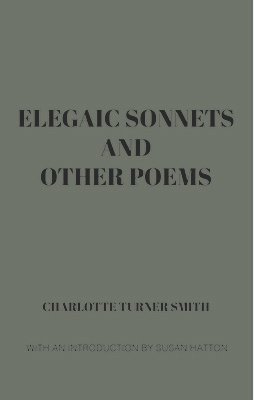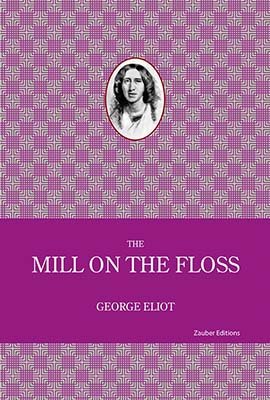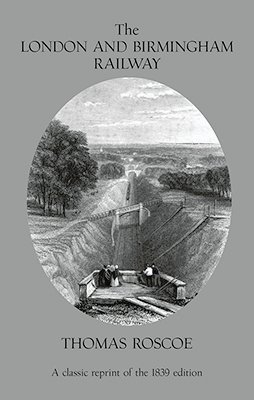Zauber editions specialise in reviving books from the past.
Zauber Editions are dedicated to resurrecting classic books from the past in a modern edition. All books have been reset and formatted in a modern type. Occasionally, spelling has been modernised. These are not cheap OCR reprints.

Charlotte Turner Smith (1749-1807) was an 18th Century poet and novelist who achieved success in her day. Her popularity was mainly due to her ‘gothic’ novels, but her lasting fame comes mainly from her poetry. She was admired by Wordsworth for her revival of the sonnet and in the 1790s became a friend of the poet William Cowper. The revolutionary impact of Wordsworth and Coleridge at the beginning of the 19th century somewhat dimmed interest in the late 18th century poets, who in some respects laid the groundwork for the Romantic poets. Charlotte Smith’s poems are very accomplished and worth the attention of all poetry readers. This edition of her poetry is designed to bring her to modern attention.
ISBN: 978-1-909054-79-0
182 pages paperback

This sprawling work from the fluent pen of S T Coleridge was first published in 1817. It began as a preface to a collected volume of his poems, but grew to become a literary autobiog-raphy. Coleridge’s philosophical views gain prominence in this work, which also has several chapters on William Wordsworth’s theory of poetry. Wordsworth believed that the language of ordinary speech was a proper vehicle for poetry and Coleridge departs from this view.Coleridge held to the concept of genius, which he believed could transcend mere talent, although the boundary between the two was no more than that between “an egg and an egg-shell”.He was much influenced by German philosophers, Friedrich Wilhelm Joseph von Schelling in particular, and he presents many of their ideas in this work.Finally, Coleridge adds much to the development of literary criticism and the critical concept of the “willing suspension of disbelief” derives from this book.The original publication was printed in two volumes. This paperback edition is a single volume.
ISBN: 978-1-909054-78-3
356 pages paperback

William Cowper (1731-1800) spent the creative years of his life at Olney, and later at nearby Weston Underwood in North Buckingham-shire. He became much admired in his day and his celebrated blank verse poem, The Task, set down an important marker for poets of the next generation.During his life he corresponded frequently with his many friends and much of that correspondence was collected and published by Thomas Shuttleworth Grimshaw in 1849. These letters are presented in a new edition in this volume.
ISBN: 978-1-909054-77-6
676 pages paperback

William Cowper (1731-1800) spent the creative years of his life at Olney, and later at nearby Weston Underwood in North Buckingham-shire. Although he had written poetry ear;ier in his life, he was 50 years old when he began to apply himself seriouisly to his art. His poetry was well-received and he became much admired in his day and his celebrat-ed blank verse poem, The Task, set down an important marker for poets of the next generation.
ISBN: 978-1-909054-76-9
454 pages paperback

Adam Bede was the first published novel by George Eliot. It was first in print in 1859.
ISBN: 978-1-909054-88-92
454 pages paperback

When Mary Ann Evans was a year old her family moved near to the village of Bedworth, and this provided the setting for Silas Marner. The old village has long since disappeared in favour of sprawling twentieth century development. In Eliot’s story
ISBN: 978-1-909054-86-8
174 pages paperback

The Mill on the Floss was first published in 1860. It tells the story of Tom and Maggie Tulliver, who grow up at Dorlcote Mill on the River Floss. The novel opens in the late 1820s when the central character, Maggie Tulliver is 9 years old. She has a complex relationship with her older brother Tom, and she has a romantic relationships with Philip Wakem, who has a high intellect and a sensitive personality. However, he is a hunchback and a marriage with him is not acceptable to the family. Life is further complicated with Stephen Guest, fiancé of Lucy Deane, a cousin of Maggie.The relationships explored in the novel are deep and complex.
ISBN: 978-1-909054-91-2
450 pages paperback

Middlemarch is regarded as as George Eliot’s greatest work of fiction.
Middlemarch follows the interconnected lives of the residents of the fictional Midlands town of Middlemarch from 1829 to the passing of the 1832 Reform Act. The novel primarily focuses on two main plots: the story of Dorothea Brooke, an idealistic young woman who marries the much older scholar Edward Casaubon, and the career of Tertius Lydgate, a progressive doctor whose ambitions are undermined by his marriage to the vain and materialistic Rosamond Vincy.
Dorothea’s marriage to Casaubon quickly becomes unhappy, and after his death, she falls in love with his young cousin, Will Ladislaw. However, Casaubon’s will states that if she marries Ladislaw, she will lose her inheritance. Despite the social and financial consequences, she eventually chooses love over wealth. Meanwhile, Lydgate’s financial struggles force him to seek aid from the corrupt banker Nicholas Bulstrode, leading to his own disgrace and departure from Middlemarch.
Other key subplots include the romance between Fred Vincy and Mary Garth, which culminates in a happy marriage after Fred reforms his reckless ways, and the downfall of Bulstrode, whose shady past is exposed, leading to public disgrace.
The novel concludes with a “Finale” detailing the characters’ later lives: Dorothea and Ladislaw marry and have children, Fred and Mary find happiness together, and Lydgate dies young, his ambitions unfulfilled, while Rosamond remarries a wealthy doctor. Middlemarch is a richly detailed study of ambition, love, social change, and moral compromise.

The setting for this novel moves away from George Eliot’s familiar territory of Midland villages to cosmopolitan London. Daniel Deronda is the adopted son of Sir Hugh Mallinger, a very wealthy man, and the novel moves in these aristocratic circles. The novel features two central characters whose lives intersect: Deronda, a highly intelligent man who nevertheless struggles to find his place in a society where he is something of an outsider and Gwendolyn Harleth, a self-centred, shallow but fascinating character who frequently takes centre stage in this novel. The novel takes on complex themes with many mid-Victorian concerns about religion, philosophy, mysticism, science, materialism and the role of Jewish people in English society.
Daniel Deronda, was published in 1876 and was Eliot’s last novel. It is a complex creation but well up to Eliot’s writing standards.
ISBN: 978-1-909054-95-0
622 pages paperback

The Grand Junction Canal was built to link the Grand Union Canal at Braunston in Northamptonshire with the River Thames at Brentford, saving time and money for goods moving from central England to London. it was completed in 1800.
John Hassall was a London-based artist and illustrator. He travelled to various points on the canal on horseback and painted at many locations. engravings were made from the paintings for the book.
After 200 years these images from parts of Middlesex, Hertfordshire, Buckinghamshire and Northamptonshire are mostly off locations which have been swept away by development.
ISBN: 978-1-909054-68-4

The London and Birmingham Railway was completed in 1838 and drew a huge amount of attention in Victorian England.
Thomas Roscoe was a well known travel writer and this account from 1840 describes his experience on the new railway.
ISBN: 978-1-909054-61-5
